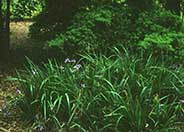
Common name:Douglas Iris
Botanical name:Iris douglasiana
Douglas iris is an evergreen perennial for shade or partial sun with blue violet spring flowers. It is a California native that is drought tolerant.
-Cornflower Farms
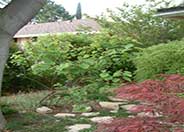
Common name:Western Redbud
Botanical name:Cercis occidentalis
This deciduous shrub ranges from 6-20 ft. tall and 10-15 ft. wide. It is desirable for its magenta spring flowers, yellow to red fall color, and dangling winter seed pods. It is tolerant of many soil types, drought and oak root fungus. It attracts hummingbirds and butterflies. The Western Redbud can be found statewide in California in the foothills below 4500 ft. elevations in chaparral and woodland communities
- Cornflower Farms
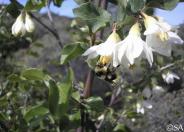
Common name:Snowdrop Bush
Botanical name:Styrax redivivus
A beautiful but little known California native. Slow to mature but worth the wait. Develops into a graceful multistemed deciduous shrub. Dark green, rounded leaves clothe the smooth gray branches. Late spring brings dangling clusters of pure white, waxy, bell-shaped blossoms. Yellow fruit appear in summer. Grows 6 to 10 ft. tall for sun to light shade. Drought tolerant. Leaves turn color before dropping during fall. We have observed hummingbirds and pipevine swallowtail butterflies nectaring on styrax blossoms. It does best in part shade with well draining, dry soil.
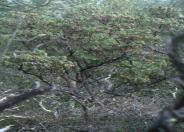
Common name:Pallid Manzanita
Botanical name:Arctostaphylos pallida
Arctostaphylos pallida, commonly known as Pallid Manzanita, Oakland Hills Manzanita, and Alameda Manzanita, is an upright shrub from the Ericaceae, or heath, family. It grows to around 6 to 13 feet. high. The branches on the shrub are reddish or grayish (more reddish) and they have twigs that tend to be bristly. The ovate to triangular leaves are bristly, strongly overlapping and clasping. They are 1.0 to 1.8 inch long and 0.8 to 1.2 inch wide. The dense, white flowers are urn-shaped and 0.2 to 0.3 inch long. The flowering period is from November to March. A. pallida commonly co-occurs with another manzanita species, Brittle Leaf Manzanita (Arctostaphylos tomentosa ssp. crustacea), but the latter is a burl-forming species with spreading leaves. A. pallida does not form burls. It does best in full sun, attracting hummingbirds and bees. Does well on ridges and slopes. It has red-orange peeling bark.
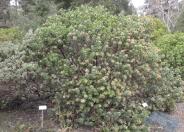
Common name:King's Mountain manzanita
Botanical name:Arctostaphylos regismontana
This San Mateo County endemic is found close to the crest of the Santa Cruz Mountains in chaparral and conifer forests. In many areas, it is slowly being shaded to extinction by the dominant conifers that surround it. This is perhaps why it is one of the tallest manzanita species in California, reaching 15 feet in height or more as it searches for sunlight. King’s Mountain manzanita grows quite densely for a tree-form manzanita. The large leaves have very short petioles and grow densely on young branches. They can obscure the branches all together. As the plant matures, the older growth becomes woody, revealing the smooth dark burnt red bark. The form is upright and vase shaped. The white flowers appear in winter and early spring. These are followed by clusters of sticky red fruit. Plant King’s Mountain manzanita as a centerpiece in a site with full sun or light shade and well-draining soil. Slowly reaches 15' tall and 8' wide.
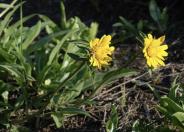
Common name:Diablo Helianthella
Botanical name:Helianthella castanea
The perennial herb Helianthella castanea is a rare plant endemic to California, and is only found in the San Francisco Bay Area, mostly in and around Mount Diablo State Park. Its common names include Mount Diablo helianthella, Mount Diablo sunflower, and Diablo rockrose. A member of the daisy and sunflower family, the flowers are bright yellow and daisy-like, with ridged petals. The plant grows in clumps of green foliage and sends up flowers on long stems. It can reach 1.5' tall. It does best in full sun with well draining soil.
Designer:
Photographer: Vicki Anderson
Maintain a two to four inch layer of mulch on the soil surface to reduce weeds, infiltrate rain water, and reduce compaction.
Develop healthy soil for plants that are vigorous and naturally pest-resistant.